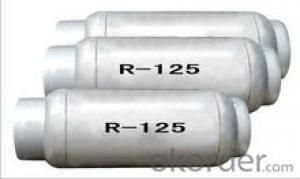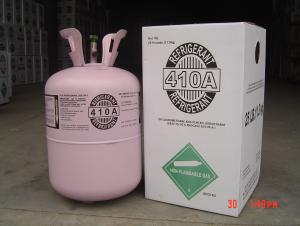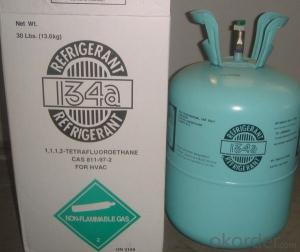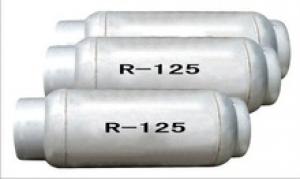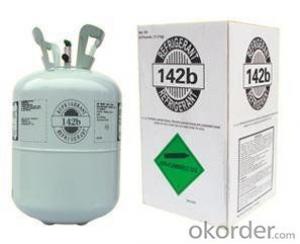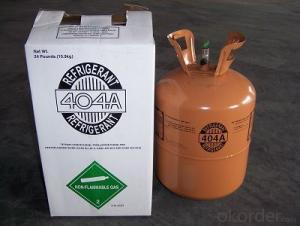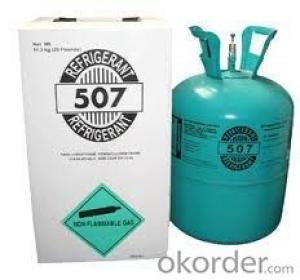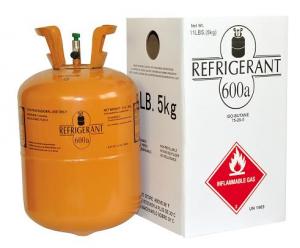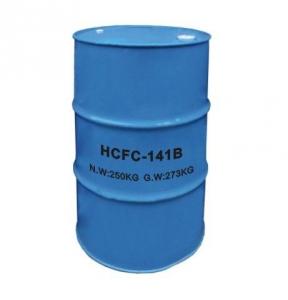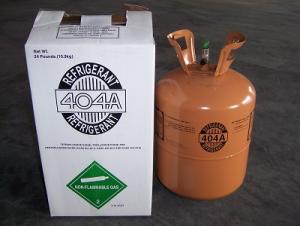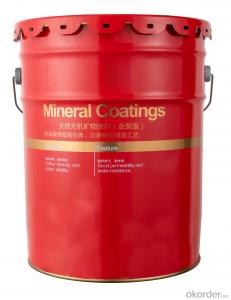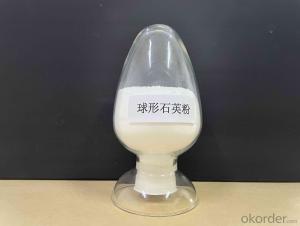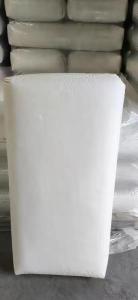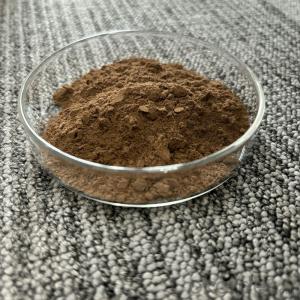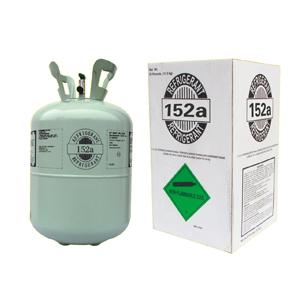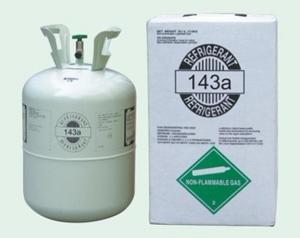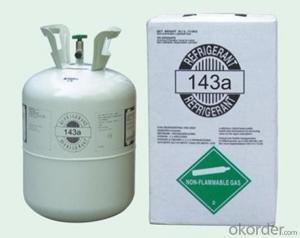Fire Extinguishing Agent R125a
- Loading Port:
- Shanghai
- Payment Terms:
- TT OR LC
- Min Order Qty:
- -
- Supply Capability:
- 1000MT m.t./month
OKorder Service Pledge
OKorder Financial Service
You Might Also Like
Specifications
1.OEM is accepted
2.Delivery time:15 days
3.Good service after sale
4.competitive price in this line
Refrigerant R125a, it is an important component of mixed working substance, and can replace R502 and R22. Used as fire-extinguishing agent, can replace Halon1211 and Halon1301.
Property of chloride
Formula: CHF2CF3
Molecular weight: 120.0
B.P.,°C: -48.3
Critical temperature,°C: 66.05
Critical pressure, MPa: 3.59
Critical density, g/cm3: 0.571
Liquid density, 25°C,g/cm3: 1.19
Vaporization heat at B.P., KJ/Kg: 165
ODP(CFC-11=1): 0
QWP(CO2=1): 3500
Quality standard
Appearance: Colorless, no turbid
Odor: Odorless
Purity, ≥%: 99.8
Water, ≤%: 0.001
Acidity, ≤%: 0.0001
Residue on evaporation, ≤%: 0.001
Packaging & Delivery
| Packaging Detail: | 800kg, 1000kg, ISO tank. |
| Delivery Detail: | 15days |
- Q:Why does toluene not belong to the derivatives of hydrocarbons?
- Hydrocarbon: sound tīng, is composed of two elements of carbon and hydrogen organic compounds known as hydrocarbons, also known as hydrocarbons. It reacts with chlorine, bromine, oxygen and other hydrocarbons to produce derivatives of hydrocarbons. Such as methane and chlorine in the light conditions of reaction to produce methyl chloride, dichloromethane, chloroform and chloroform (carbon tetrachloride) and other derivatives. The concept of derivatives is hydrocarbon and chlorine, bromine, oxygen and other reaction products. While toluene is not methyl and benzene, she is a whole noun is aromatic. Also known as aromatic hydrocarbons. Generally have one or more six-ring (benzene ring) with a special structure. The simplest aromatic hydrocarbons are benzene, toluene, xylene. There is also naphthenes. As the name suggests it is a ring structure. The most common is the five carbon atoms or six carbon atoms of the ring, the former called cyclopentane, which is called cyclohexane. The molecular formula of the cycloalkane is of the formula CnH2n. Cycloalkane is also called cycloalkane hydrocarbons. And alkanes. Is a carbon atom between the single bond phase chain hydrocarbon. Since the number of atoms that make up the hydrocarbon and hydrogen is different, the result is that the petroleum contains hydrocarbon molecules with large and small differences. Alkanes are named according to the carbon atoms and numbers contained in the molecule, and the number of carbon atoms is less than 10, from 1 to 10, followed by a, B, C, D, E, G, Alkane to say that the number of carbon atoms in more than 11, with the number that thank you to adopt
- Q:Is the heterocyclic compound not a derivative of cyclic hydrocarbons? why?
- The heterocyclic compound is an organic compound containing a heterocyclic structure in its molecule. The atoms that make up the ring contain at least one heteroatom in addition to carbon atoms. The heteroatoms include oxygen, sulfur, nitrogen and the like. Theoretically, the heterocyclic compound can be regarded as a derivative of benzene, that is, one or more CH in the benzene ring is replaced by a heteroatom. The heterocyclic compound may be in parallel with the benzene ring to form a fused ring heterocyclic compound.
- Q:What is the most primitive person on earth?
- These macromolecules are not in the modern sense of the protein and nucleic acid polymer, but a variety of amino acids, nucleosides, phosphoric acid, carbohydrates and some other small molecules of the disorder of the polymer, when the nucleoside and phosphoric acid composition of nucleoside Acid, and gradually form a nucleotide chain, the formation of these nucleotide chain of the amino acid on the formation of the field of binding force, and then assembled peptide chain. Or by the combination of a variety of amino acids into peptide chain formed by the force field on the surrounding nucleus formation field binding effect, and then assembled the nucleotide chain, with the formation of peptide chain and nucleotide chain longer and longer , The molecular weight is growing, and ultimately the formation of nucleic acids and proteins, nucleic acid and protein formation is the product of interaction with each other, is generated at the same time.
- Q:Why not ah?
- A series of compounds in which a hydrogen atom in a hydrocarbon molecule is replaced by another atom or radical is called a derivative of a hydrocarbon
- Q:Carbon compounds (except inorganic carbon compounds), hydrocarbons and derivatives of the general term is?
- Hydrocarbon it
- Q:How to do it? Solve Inorganic Chemistry
- Inorganic chemistry is one of the earliest disciplines in the development of chemical science. It undertakes a major task of studying the composition, structure, properties and reactions of all elements and elements (except hydrocarbons and derivatives). The current development of inorganic chemistry has two distinct trends, that is, in the breadth of the broadening and depth of the advance. It is the three pillars of modern civilization
- Q:What is organic matter?
- Organic matter usually refers to carbon-containing compounds, or hydrocarbons and their derivatives are collectively referred to as organic compounds.
- Q:What is the definition of organic matter
- Organic matter usually refers to carbon-containing compounds, or hydrocarbons and their derivatives are collectively referred to as organic compounds.
- Q:Hydrocarbons and hydrocarbon derivatives are not all non-electrolytes
- Hydrocarbons are, derivatives are not necessarily, such as organic acids (formic acid, acetic acid, etc.)
- Q:Are hydrocarbons all organic?
- A series of compounds with similar structures and different molecular composition of one or several "CH2" radicals are called the same series, and each member in the same series is called homologous, and the chemical properties of homologues are similar due to their similar structure. Their physical properties, often with the increase in molecular weight and regular changes.
1. Manufacturer Overview |
|
|---|---|
| Location | |
| Year Established | |
| Annual Output Value | |
| Main Markets | |
| Company Certifications | |
2. Manufacturer Certificates |
|
|---|---|
| a) Certification Name | |
| Range | |
| Reference | |
| Validity Period | |
3. Manufacturer Capability |
|
|---|---|
| a)Trade Capacity | |
| Nearest Port | |
| Export Percentage | |
| No.of Employees in Trade Department | |
| Language Spoken: | |
| b)Factory Information | |
| Factory Size: | |
| No. of Production Lines | |
| Contract Manufacturing | |
| Product Price Range | |
Send your message to us
Fire Extinguishing Agent R125a
- Loading Port:
- Shanghai
- Payment Terms:
- TT OR LC
- Min Order Qty:
- -
- Supply Capability:
- 1000MT m.t./month
OKorder Service Pledge
OKorder Financial Service
Similar products
New products
Hot products
